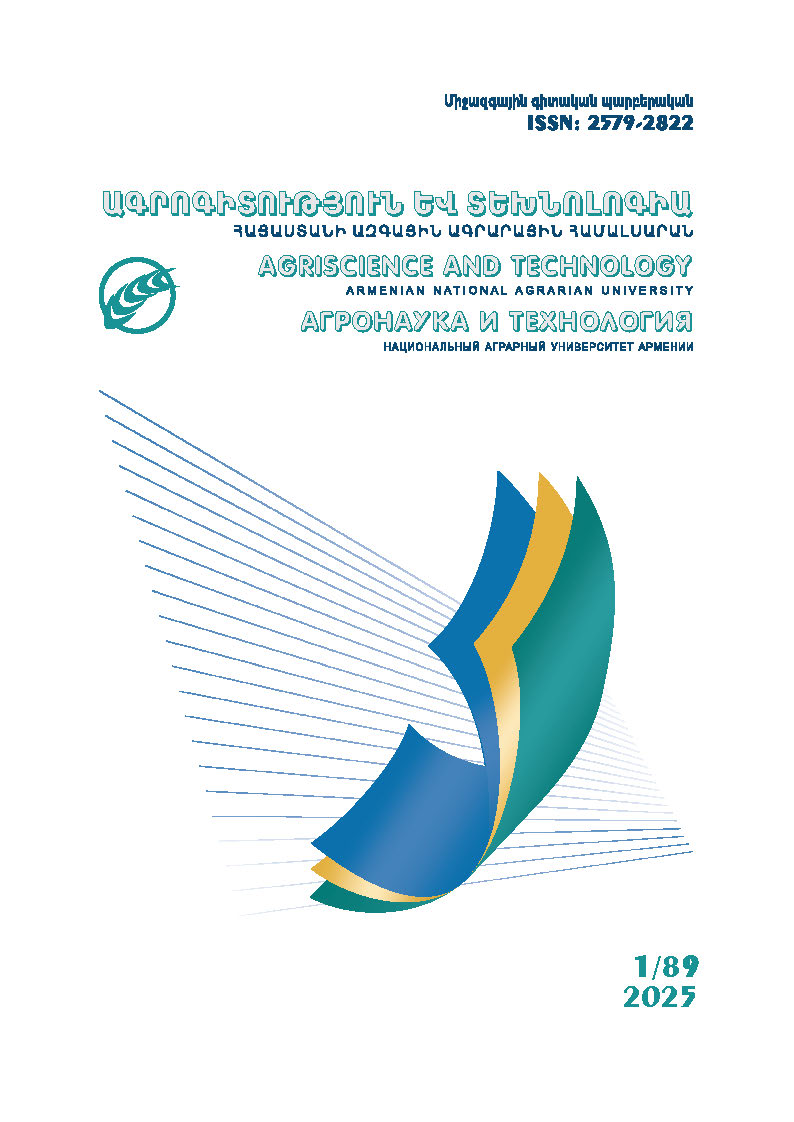Prevalence of Swine Metastrongylosis in the Republic of Armenia
DOI:
https://doi.org/10.52276/25792822-2025.1-65Keywords:
blood, metastrongylosis, pathogen, pig, rainwormAbstract
Pig breeding is a well-established branch of animal husbandry with significant economic and productive potential. Due to key biological attributes - such as early sexual maturity, short gestation period, high prolificacy, rapid growth rates, efficient feed conversion, and favorable carcass yield - pig farming holds a leading position in global meat production. The objective of this study was to assess the prevalence of metastrongylosis in domestic pigs (Sus scrofa domesticus) in the Republic of Armenia. The results indicate that porcine metastrongylosis is among the most widespread parasitic respiratory diseases, both globally and within the mountainous forest regions of northeastern Armenia. The predominant etiological agents identified were Metastrongylus pudendotectus and Metastrongylus elongatus, with M. pudendotectus being the most prevalent species. Young pigs (weaners and growers) were found to be approximately twice as susceptible to infection compared to adult swine. Hematological analyses revealed a decrease in erythrocyte count, platelet levels, and hemoglobin concentration in infected animals, accompanied by a marked leukocytosis - indicative of an inflammatory response to parasitic infection. The distribution of the disease strongly correlates with the presence of intermediate hosts, primarily earthworms (Lumbricidae spp.), which are more abundant in forested areas. Consequently, pigs in these ecological zones exhibit a higher incidence of infection. Seasonality was also observed, with the highest occurrence reported in autumn, followed by spring, and the lowest incidence noted during winter months.
Downloads
Published
How to Cite
Issue
Section
License
Copyright (c) 2025 Valeri Grigoryan, Armine Ghazaryan, Spartak Yeribekyan, Liana Grigoryan

This work is licensed under a Creative Commons Attribution-NonCommercial 4.0 International License.
Creative Commons Attribution-Non-Commercial (CC BY-NC). CC BY-NC allows users to copy and distribute the article, provided this is not done for commercial purposes. The users may adapt – remix, transform, and build upon the material giving appropriate credit, providing a link to the license. The full details of the license are available at https://creativecommons.org/licenses/by-nc/4.0/.





